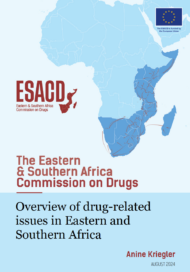Posted on 11 Oct 2010
Afghan heroin is traf cked to every region of the world except Latin America. A global network of routes, facilitated by international and domestic crime groups ensures that heroin is traf cked from production countries in South West Asia to global consumer markets. Multiple factors affect traf ckers’ choice of routes including risk of detection, geo-political changes, logistical dif culties, topographic considerations and existing relationships between criminal groups.
Three broad traf cking routes have been identi ed for the movement of Afghan heroin. The “northern route” is the main heroin traf cking corridor linking Afghanistan to Central Asia and the large market of the Russian Federation. An emerging network of trajectories known collectively as the “southern route” travels southward from Afghanistan, either through Pakistan or the Islamic Republic of Iran1, crosses the Indian Ocean and targets Africa, Europe, and Asia. The third and oldest route is an overland trajectory that crosses the Islamic Republic of Iran, Turkey and South-Eastern Europe to Western and Central Europe and is colloquially known as the “Balkan route”.2 This report presents a “Baseline Assessment” of the illicit Afghan opiate traf cking situation in Africa, with a focus on heroin traf cking along the southern route out of Afghanistan to, through and from Africa.



